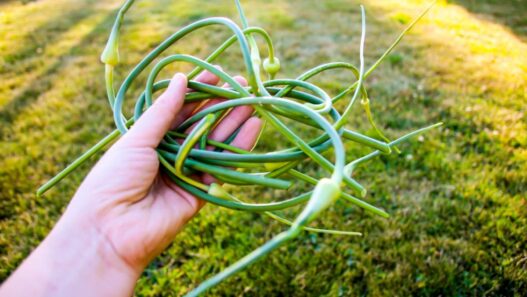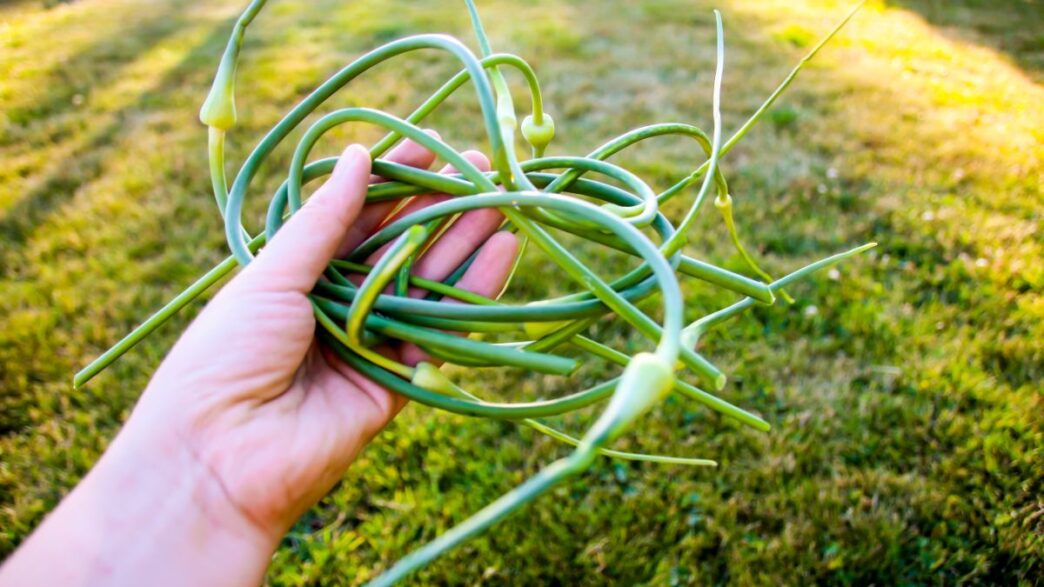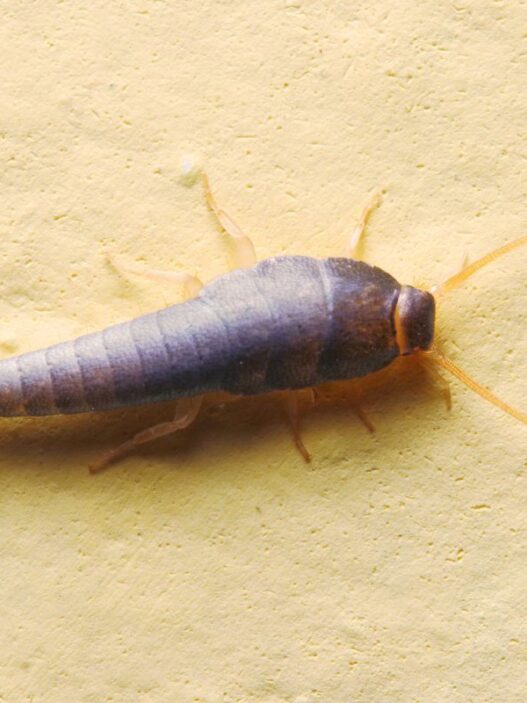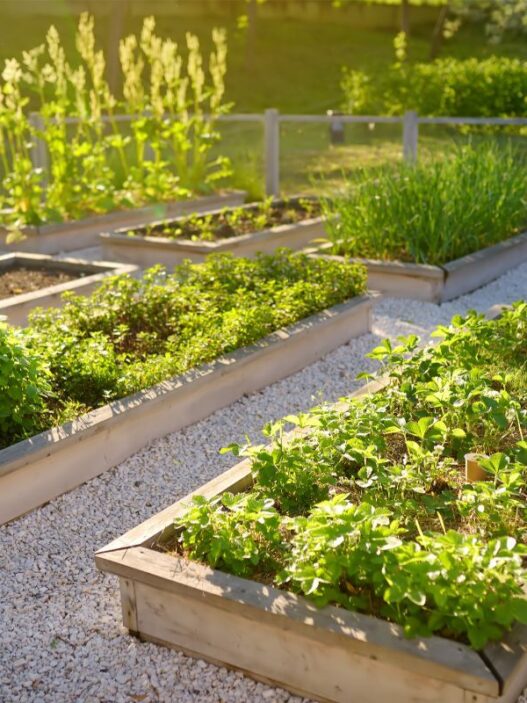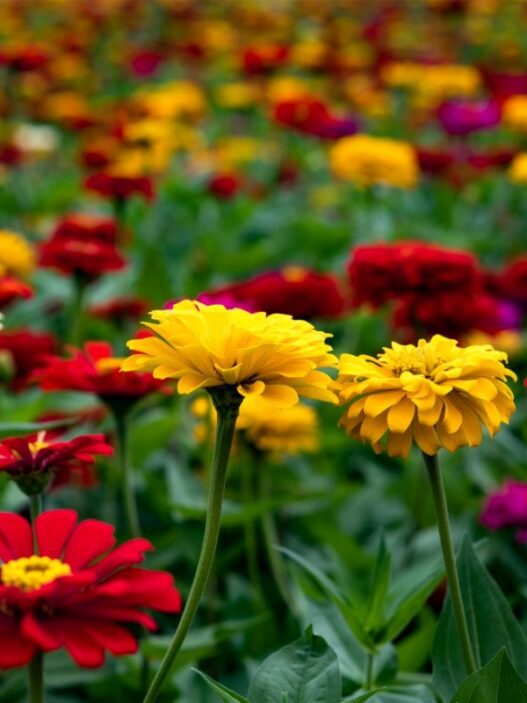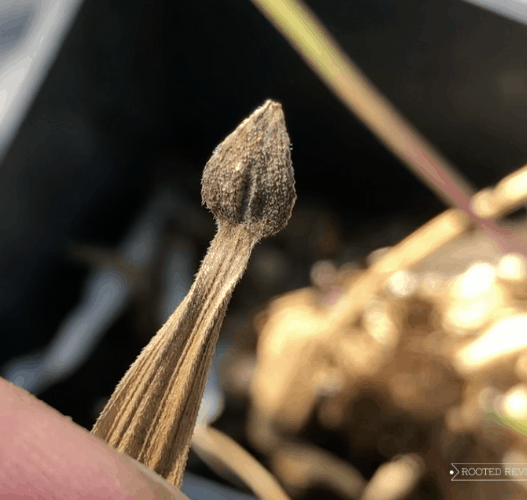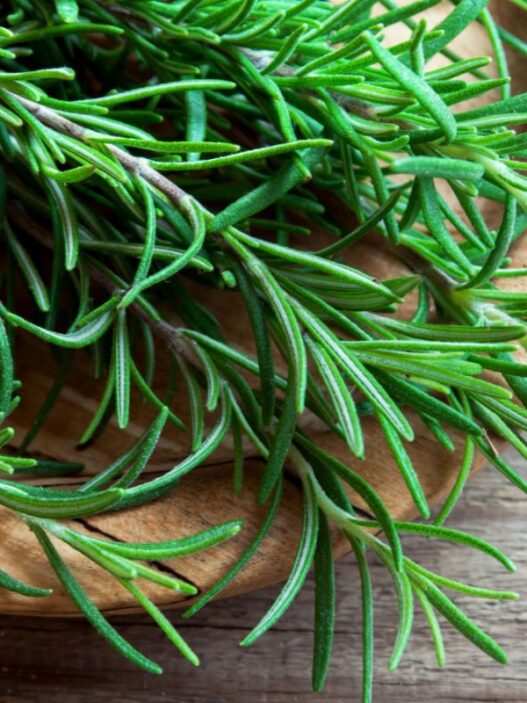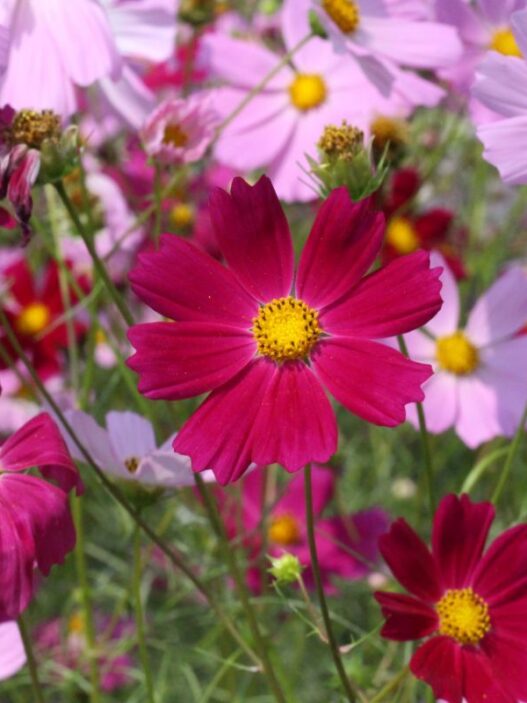We’ve all had that moment of doubt, standing in our garden and asking ourselves whether the garlic scapes grow back when you remove them from the plant.
Over the years, I’ve learned that garlic scapes are part of the garlic plant reproductive cycle, and they do not grow back once removed. In fact, each plant only produces one scape per season, which bears a flower that turns into 50 bulbils or seeds.
In this article, I’ll expand on the whole ‘do garlic scapes grow back’ thing. I’ll also explain:
- What are garlic scapes?
- How many scapes does a garlic plant produce?
- What happens if you leave the scapes on garlic?
- Do you eat the flower of a garlic scape?

What Are Garlic Scapes?
Garlic scapes are slender, flowering stalks that emerge from the top of the hardneck garlic plant.
They normally pop out between late spring to early summer. They curl and spiral gracefully like nature’s abstract art that catches the eye.
But there’s more to them than the visual appeal. Fun Fact – they are actually an integral part of the growth process of the garlic plant.
While the garlic bulbs are busy developing underground, the scape grows a bulbous bud above the soil that can become a flower if left undisturbed
Do Garlic Scapes Grow Back?
Do garlic scapes make a comeback when you snip them away from the plant?
This query often pops up in the minds of us curious home gardeners at some point.
Unfortunately, unlike the leaves, I have got to break it to you that garlic scapes don’t grow back once you cut them.
Why? Well, the scapes are part of the garlic plant reproductive cycle and only form once per year. So, if you want more shoots, you need to grow more garlic plants per season.
How many scapes does a garlic plant produce?
If you have been wondering how generous a garlic plant is when producing the scapes, here’s the scoop: it’s a case of quality over quantity.
Each garlic plant is a solo artist and typically produces only a single scape. Yes, you read that right!
But my inquisitive friends, be prepared to get surprised! That one scape holds the potential of producing over 50 bulbils or tiny seeds on average that grows into a new plant if given the right conditions.
So, even though a garlic plant might not throw a scapes party, it’s more generous with the possibilities they hold.
Do garlic scapes need to be removed?
To snip or not to snip the scapes on the garlic is the main conundrum for many gardeners.
Well, if you let nature take its course of action and leave scapes on the garlic plant, they will eventually grow into delicate flowers, which later turn into seeds or bulbils.
Just like the scapes, you can use the seeds in many dishes or grow them into new plants, as mentioned above.
Conversely, if you remove those scapes, you send a clear message to the plant, “Focus your energy on growing large bulbs!”
The plant shifts its energy from reproduction mode and produces larger bulbs and greater yield, like a true harvest victory.
If you want to remove the scapes, just sniff them off with your fingers below the first bend. If you prefer tools, gardening scissors will do the trick as well.
Now, here’s a golden nugget of advice: timing is everything! If you remove the scapes earlier in the season, you’ll boost the plant’s productivity and get a better-tasting and tender shoot for your culinary adventure.
Do you eat the flower of a garlic scape?
Each part of the garlic scape is edible, from the vibrant green stalk to the flower bud at the very tip. However, some folks remove the flowering bud because it can have a slightly different texture than the rest of the stalk.
So, it’s all about personal preferences, but be mindful! When eating the flower bulb raw, it can be a little fibrous. While if you saute or roast it, the bulb will take longer than the stalks.
Now, here is the culinary twist that will have you grinning ear to ear! To savor the garlic scape flowering buds, add them to your basil pesto sauce instead of the traditional garlic cloves and enjoy its milder taste with fish, rice, pasta, or seafood.
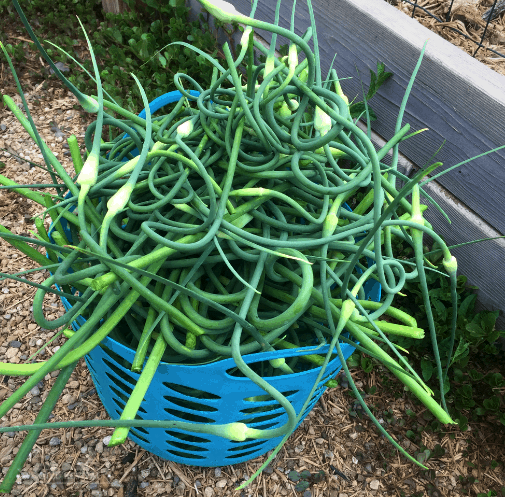
What to do with garlic scapes after cutting?
Once you sniff off garlic scapes from the plant, you can savor them raw or cooked, depending on your choices. So, let me pour on some creative ways to make the most out of those shoots
1. Salads
When adding garlic scapes to your salads, the options are endless as your imagination.
Some of the best garlic scapes salads that I have tried are:
- Spring Salad with Garlic Scape Dressing
- Carrot and Garlic Scape Salad
- Garlic Scape Pesto Pasta Salad
2. Pasta
You can simply swap out the garlic cloves or leaves in your pasta dishes with the scapes and enjoy a milder taste that keeps your tastebuds dancing with joy!
Some pasta with garlic scapes that you can try are:
- Lemon Garlic Scape Pasta
- Garlic Scape Pasta with Parmesan Cream Sauce
- Spinach and Garlic Scape Pasta
3. Stir-fries
Chinese recipes, especially the stir-fry technique, are incomplete without garlicky goodness. But if you don’t want to add a buttery taste to your stir-fry dish, throw in some chopped garlic scapes instead for a more oniony flavor.
4. Pickles
If you’re a fan of sour dishes, why not pickle your scapes? Submerge them in a brine of vinegar, water, and spices brine, and let them marinate their way to tangy deliciousness.
5. Pesto sauce
Just like the traditional basil version, blend chopped scapes with nuts, cheese, olive oil, and a pinch of salt to get a vibrant, garlicky pesto sauce for your pasta and bread
Wrapping Up!
There you have it! I’ve revealed do garlic scapes grow back when you remove them from the plant. I’ve also answered how many scapes a garlic plant produces and whether you really need to remove them.
Keep in mind that understanding the role of garlic scapes brings their unique flavor to your dishes and lets you get a bountiful harvest every season.
